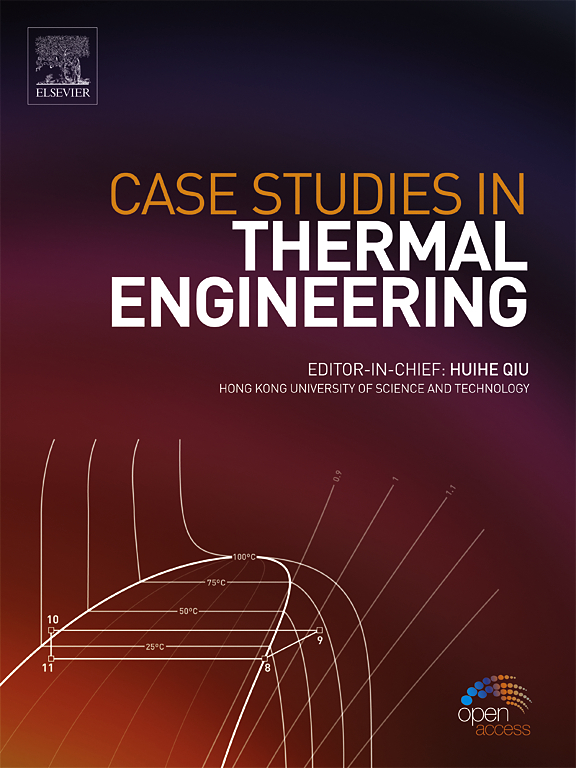Photovoltaic thermal system design including aquifer thermal energy storage in a fifth generation district heating network in Hilversum
IF 6.4
2区 工程技术
Q1 THERMODYNAMICS
引用次数: 0
Abstract
The urgent need to address global warming and transition to sustainable energy solutions has driven the development of innovative heating systems. Among those solutions, several district heating alternatives have been proposed to combine heat pumps and thermal energy storage tanks. This paper addresses the integration of photovoltaic thermal systems (PVT) with aquifer thermal energy storage (ATES) within a fifth-generation district heating network as an innovative combination to minimise electrical power consumption from the grid, thereby reducing grid dependency and CO emissions. The proposed configuration is tested for the Werfgebied district in Hilversum, the Netherlands A Python model of the multi-energy carrier system is developed to investigate the effects of configuration, storage distribution, and component sizing within the district heating network, embedding the thermal and electrical behaviour of the components and their interaction. The results show that an optimal configuration for the ATES and PVT combination involves a single ATES well rather than distributed thermal energy storage. The results indicate that the aquifer’s size significantly affects the overall operating temperature and its fluctuations. A larger ATES maintains a stable but relatively colder temperature. If constrained by a maximum allowed ATES temperature of 20 °C, the optimal ATES size is 175 000 m3; however, when considering the overall benefit and excluding that constraint, the optimal system size comprises an ATES of 380 000 m3 and an 800 module PVT system, reducing the overall emissions by 856 tonnes of CO2 equivalent compared to the case without the district heating.

光伏热系统设计包括希尔弗瑟姆第五代区域供热网络中的含水层热能储存
应对全球变暖和向可持续能源解决方案过渡的迫切需要推动了创新供暖系统的发展。在这些解决方案中,提出了几种区域供热替代方案,将热泵和储热罐结合起来。本文将第五代区域供热网络中的光伏热系统(PVT)与含水层热能储存(ATES)结合起来,作为一种创新的组合,以最大限度地减少电网的电力消耗,从而减少对电网的依赖和二氧化碳排放。提出的配置在荷兰Hilversum的Werfgebied地区进行了测试。开发了多能载体系统的Python模型,以研究区域供热网络中配置、存储分布和组件尺寸的影响,嵌入组件的热和电行为及其相互作用。结果表明,最优的ATES和PVT组合配置是单井,而不是分布式储热。结果表明,含水层的大小对整体工作温度及其波动有显著影响。较大的ATES保持稳定但相对较冷的温度。如果受最大允许温度为20°C的约束,最佳ATES尺寸为17.5万m3;然而,当考虑到整体效益并排除这一限制时,最佳系统尺寸包括380 000立方米的ATES和800个模块的PVT系统,与没有区域供热的情况相比,减少了856吨二氧化碳当量的总排放量。
本文章由计算机程序翻译,如有差异,请以英文原文为准。
求助全文
约1分钟内获得全文
求助全文
来源期刊

Case Studies in Thermal Engineering
Chemical Engineering-Fluid Flow and Transfer Processes
CiteScore
8.60
自引率
11.80%
发文量
812
审稿时长
76 days
期刊介绍:
Case Studies in Thermal Engineering provides a forum for the rapid publication of short, structured Case Studies in Thermal Engineering and related Short Communications. It provides an essential compendium of case studies for researchers and practitioners in the field of thermal engineering and others who are interested in aspects of thermal engineering cases that could affect other engineering processes. The journal not only publishes new and novel case studies, but also provides a forum for the publication of high quality descriptions of classic thermal engineering problems. The scope of the journal includes case studies of thermal engineering problems in components, devices and systems using existing experimental and numerical techniques in the areas of mechanical, aerospace, chemical, medical, thermal management for electronics, heat exchangers, regeneration, solar thermal energy, thermal storage, building energy conservation, and power generation. Case studies of thermal problems in other areas will also be considered.
 求助内容:
求助内容: 应助结果提醒方式:
应助结果提醒方式:


